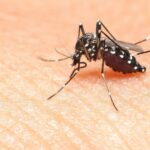Bees play a crucial role in pollinating our plants, contributing to a healthy and thriving ecosystem.
With the alarming decline of bee populations worldwide, it is more important than ever to support our buzzing friends by providing them with an abundance of nectar-rich plants.
In this comprehensive guide, we will explore 10 melliferous plants that are not only beautiful additions to your garden, but also serve as enticing attractions for bees.
Discover the captivating features, planting tips, and fascinating history behind these bee-friendly plants, and get ready to transform your garden into a haven for these essential pollinators.
1. Lavender (Lavandula)
As one of the most beloved plants for both gardeners and bees, lavender holds a special place in the realm of melliferous plants.
- Lavender’s alluring beauty: With its striking purple hues and enchanting fragrance, lavender is a stunning addition to any garden, adding a touch of Provence to your landscape. Bees are particularly drawn to its aromatic scent, making it an effective and visually appealing choice for attracting pollinators.
- Planting tips: Lavender is a hardy plant that thrives in well-draining soil and full sun. It can be grown from seeds, cuttings, or young plants, and requires minimal maintenance once established. Be sure to prune your lavender plants after flowering to encourage further blooms and maintain a compact shape.
- A rich history: Lavender has been revered for centuries for its medicinal, culinary, and cosmetic uses. In ancient Rome, it was valued for its antiseptic properties and used in bathing rituals, while in medieval Europe, it was planted in monastery gardens for its variety of healing benefits.
2. Borage (Borago officinalis)
Also known as the “bee’s bread,” borage is a true bee magnet with its distinctive blue flowers and abundant nectar production.
- Borage’s exceptional bee appeal: Borage flowers provide a continuous supply of nectar throughout the day, unlike many other plants that replenish their nectar reserves only in the morning or evening. This makes borage an irresistible attraction for bees, ensuring a constant buzz of activity in your garden.
- Planting and care: Borage is an annual plant that is easily grown from seeds sown directly in the garden after the last frost. It prefers well-draining soil and full sun to partial shade. Borage can become quite large, so give it plenty of space to grow and self-seed for a continuous display of blooms.
- Edible and versatile: Borage’s edible flowers and leaves offer a refreshing cucumber-like flavor and can be used in salads, drinks, and other culinary creations. Its medicinal properties have been recognized since ancient times, and it has been used to treat ailments such as stress, fever, and inflammation.
3. Bee Balm (Monarda)
Bearing a name that leaves no doubt about its bee-attracting abilities, bee balm is a stunning and aromatic addition to any pollinator-friendly garden.
Features that appeal to bees: Bee balm’s vibrant tubular flowers, ranging from red to pink, purple, and white, provide an ample supply of nectar that bees find irresistible. The plant’s strong minty scent also serves as a powerful attractant for pollinators.
Planting and maintenance: Bee balm thrives in moist, well-draining soil and full sun to partial shade. It can be susceptible to powdery mildew, so it is important to provide good air circulation and avoid overhead watering. Regular deadheading will encourage more blooms and extend the flowering season.
American origins: Bee balm is native to North America and was used by indigenous peoples for its medicinal properties, including as a remedy for colds, fevers, and skin infections. It was also used as a seasoning for wild game, giving it another common name: wild bergamot.
4. Echinacea (Echinacea purpurea)
Popular for its immune-boosting properties, echinacea is not only a champion for human health but also a favorite among bees.
- Attracting bees with color andtexture:
- Echinacea’s large, daisy-like flowers feature a prominent central cone surrounded by vivid petals in shades of pink, purple, yellow, or white. This unique combination of color and texture is highly appealing to bees, while also adding visual interest to your garden.
- Growing echinacea:
- Echinacea is a low-maintenance perennial that prefers well-draining soil and full sun. It is drought-tolerant once established and can be grown from seeds, divisions, or purchased plants. Divide your echinacea plants every few years to maintain their vigor and promote optimal blooming.
- A storied past:
- Long before its modern popularity as a natural remedy, echinacea was used by Native Americans to treat a wide range of ailments, from snake bites to toothaches. It was also used in traditional herbal medicine by settlers and early American doctors.
5. Foxgloves (Digitalis)
With their tall spires of bell-shaped flowers, foxgloves are sure to make a dramatic statement in your garden while enticing bees with their nectar-rich blooms.
- What makes foxgloves attractive to bees: The tubular shape of foxglove flowers is perfectly suited for bees, allowing them to crawl inside and feast on the nectar within. The speckled interior of the flowers also provides a visual guide for bees, directing them towards the nectar source.
- Planting and care: Foxgloves are biennial or short-lived perennial plants that prefer partial shade and well-draining soil. They can be grown from seeds or purchased as young plants, and will readily self-seed in the garden. Keep in mind that all parts of the foxglove plant are toxic, so plant them in an area where children and pets will not be tempted to ingest them.
- A historical perspective: Foxgloves have been admired for their beauty and used for their medicinal properties since ancient times. In the 18th century, the plant’s active ingredient, digitalis, was discovered to be an effective treatment for heart conditions, a use that continues today.
6. Sunflowers (Helianthus)
As towering icons of summer, sunflowers bring both beauty and sustenance to the bees that visit your garden.
Why bees love sunflowers: The large, flat face of a sunflower provides an easily accessible platform for bees to forage for nectar and pollen. Sunflowers also have a high nectar production rate, ensuring a bountiful feast for visiting bees.
Planting tips: Sunflowers are annual plants that are easily grown from seeds sown directly in the garden after the last frost. They prefer full sun and well-draining soil, and come in a wide variety of sizes and colors to suit any garden style.
More than just a pretty face: Sunflowers have been cultivated for thousands of years for their edible seeds and oil, as well as for their ornamental beauty. They also have deep cultural and symbolic significance, representing happiness, loyalty, and perseverance in various cultures and traditions.
7. Salvia (Salvia spp.)
With their prolific blooms and diverse range of colors, salvia plants are a versatile and attractive option for supporting bees in your garden.
- The allure of salvia: Salvia’s tubular flowers, often arranged in spikes, are rich in nectar and come in a vast array of colors, including blue, red, pink, white, and purple. This diversity ensures that you can find a salvia variety to complement any garden scheme while providing a valuable food source for bees.
- How to grow salvia: Salvia plants can be annual or perennial, depending on the species, and generally prefer well-draining soil and full sun. They can be grown from seeds or purchased as young plants, and many species benefit from regular deadheading to promote continuous blooming.
- Cultural and medicinal significance: Salvia has been used for centuries for its medicinal properties and as a spiritual and ritualistic herb. The name “salvia” comes from the Latin word “salvare,” meaning “to save,” reflecting the plant’s historical reputation as a healing and protective herb.
8. Agastache(Anise Hyssop)
Anise hyssop, or Agastache, is a versatile and aromatic plant that is sure to draw bees to your garden with its unique combination of nectar-rich flowers and fragrant foliage.
- What makes Agastache attractive to bees:
- Agastache’s spiky flower clusters are rich in nectar and come in a variety of colors, including blue, purple, pink, and white. The plant’s anise-scented leaves also serve as an enticing fragrance for bees, making it an all-around feast for the senses.
- Growing Agastache:
- Agastache is a low-maintenance perennial that can be grown from seeds or purchased as plants. It thrives in well-draining soil and full sun, and is drought-tolerant once established. Regular deadheading will help to prolong the blooming season and keep your plants looking their best.
- Historical and culinary uses:
- Native to North America, Agastache has a long history of use by indigenous peoples for its medicinal and culinary properties. The leaves can be used to make a flavorful tea or added to salads and other dishes for a hint of anise flavor.
9. Aster (Aster spp.)
Asters are a late-blooming perennial that provides a crucial source of nectar for bees as the season winds down and other flowers begin to fade.
- The appeal of asters to bees: Asters produce an abundance of small, daisy-like flowers that are rich in nectar, making them a valuable food source for bees during the late summer and fall months. The wide range of colors available, including blue, purple, pink, and white, ensures that there is an aster variety to suit every garden palette.
- Planting and care: Asters are low-maintenance plants that can be grown from seeds, divisions, or purchased plants. They prefer well-draining soil and full sun to partial shade. To prolong the blooming season and encourage bushier growth, pinch back the stems in early summer.
- A symbol of patience and elegance: Asters have been admired for their beauty and used as a symbol of patience and elegance in various cultures and traditions. In ancient Greece, they were believed to be the tears of the goddess Astraea, who wept for the loss of the Earth’s innocence.
10. Goldenrod (Solidago)
Often unfairly maligned as a cause of seasonal allergies, goldenrod is actually a valuable late-season nectar source for bees and other pollinators.
Why bees are drawn to goldenrod: Goldenrod produces clusters of small, bright yellow flowers that are rich in nectar, making them an important food source for bees in the late summer and fall when other plants are beginning to fade. The plant’s tall, upright habit also provides a striking architectural element in the garden.
How to grow goldenrod: Goldenrod is a hardy perennial that can be grown from seeds, divisions, or purchased plants. It prefers well-draining soil and full sun to partial shade and is drought-tolerant once established. Be aware that some species can spread aggressively, so choose a well-behaved variety or manage its spread through regular division.
A misunderstood plant: While goldenrod is often blamed for causing hay fever, it is actually the wind-pollinated ragweed that blooms at the same time that is the true culprit. Goldenrod’s heavy, sticky pollen is not easily carried by the wind, making it a valuable and allergy-friendly addition to the bee-friendly garden.
In conclusion, incorporating these 10 melliferous plants into your garden is a wonderful way to support bees and other pollinators while also enhancing the beauty and diversity of your landscape. By providing a steady supply of nectar-rich blooms throughout the growing season, you can help ensure the health and survival of these essential creatures and enjoy the many benefits they bring to our gardens and ecosystems.




